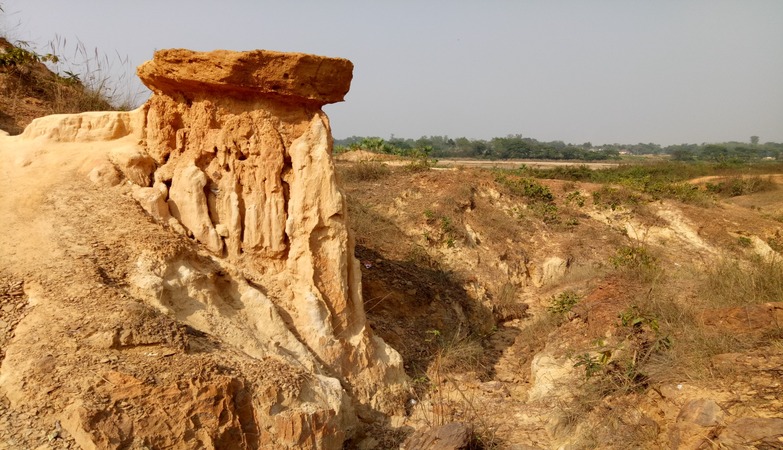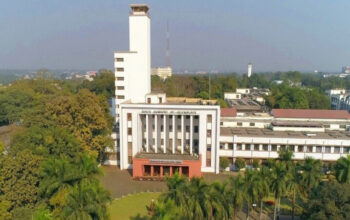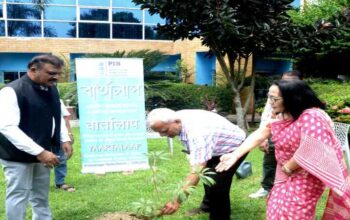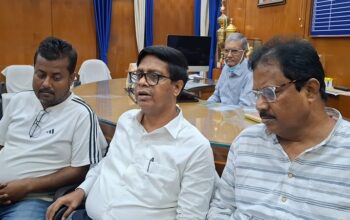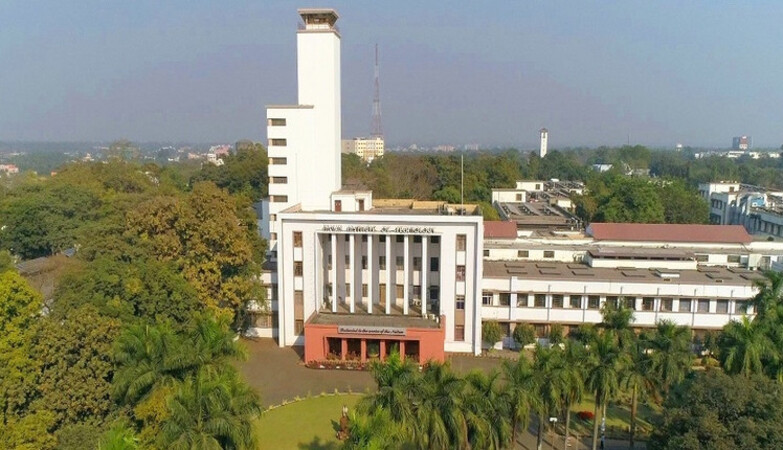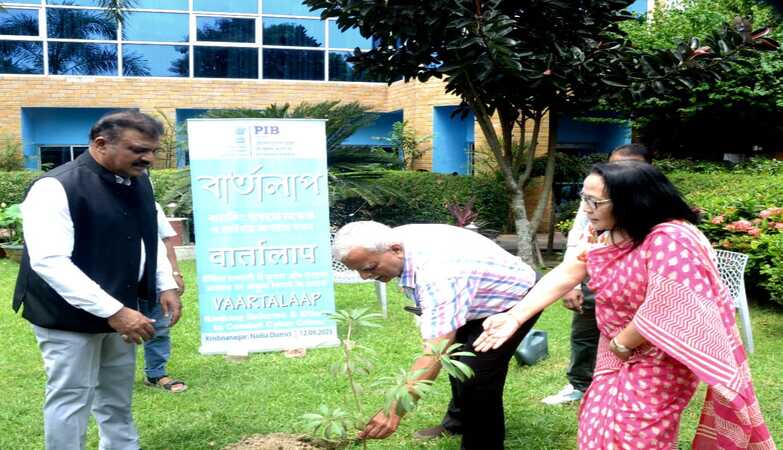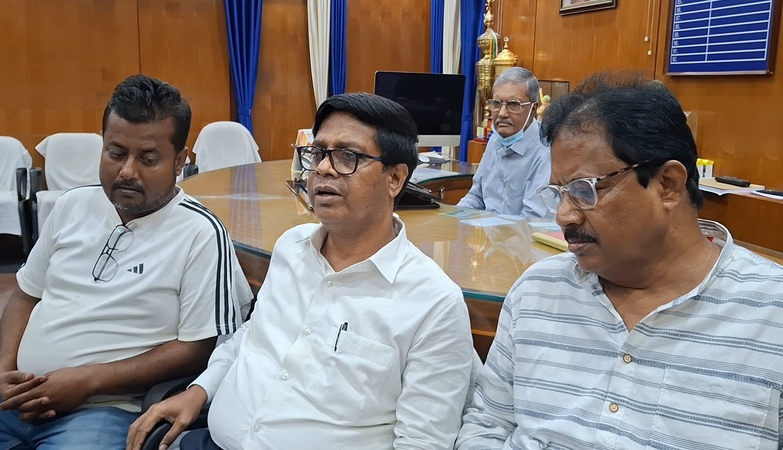Biswabrata Goswami
MIDNAPORE, 28 JUNE: Making a bold stride toward showcasing Bengal’s geological richness, the Geological Survey of India (GSI) has officially declared Gongoni—a stunning lateritic canyon in West Midnapore—as a Geo-Heritage Site. This dramatic landscape of red ravines and sculpted cliffs, long revered by locals as “Bengal’s Grand Canyon,” now stands nationally recognised for its scientific and visual significance, opening new horizons for research, education, and geo-tourism.
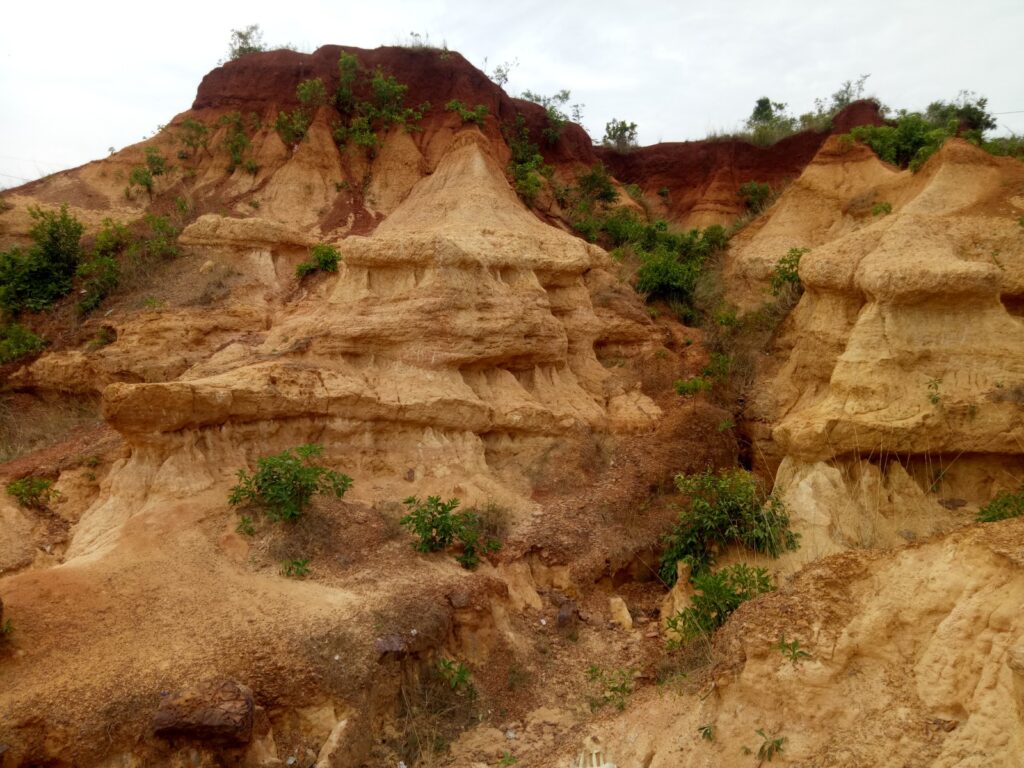
Often likened to a miniature Grand Canyon for its fiery red cliffs and dramatic erosional forms, Gongoni’s rugged terrain has now earned formal recognition as a geological marvel—etched by time, shaped by nature, and finally celebrated for its scientific, aesthetic, and educational value.
The declaration was marked by the installation of a multilingual (Bengali, Hindi, and English) information board at the site by officials from GSI’s Eastern Region and West Bengal Unit. Though the status does not carry immediate financial backing, experts say the recognition opens the door to increased research opportunities, academic interest, and sustainable tourism.
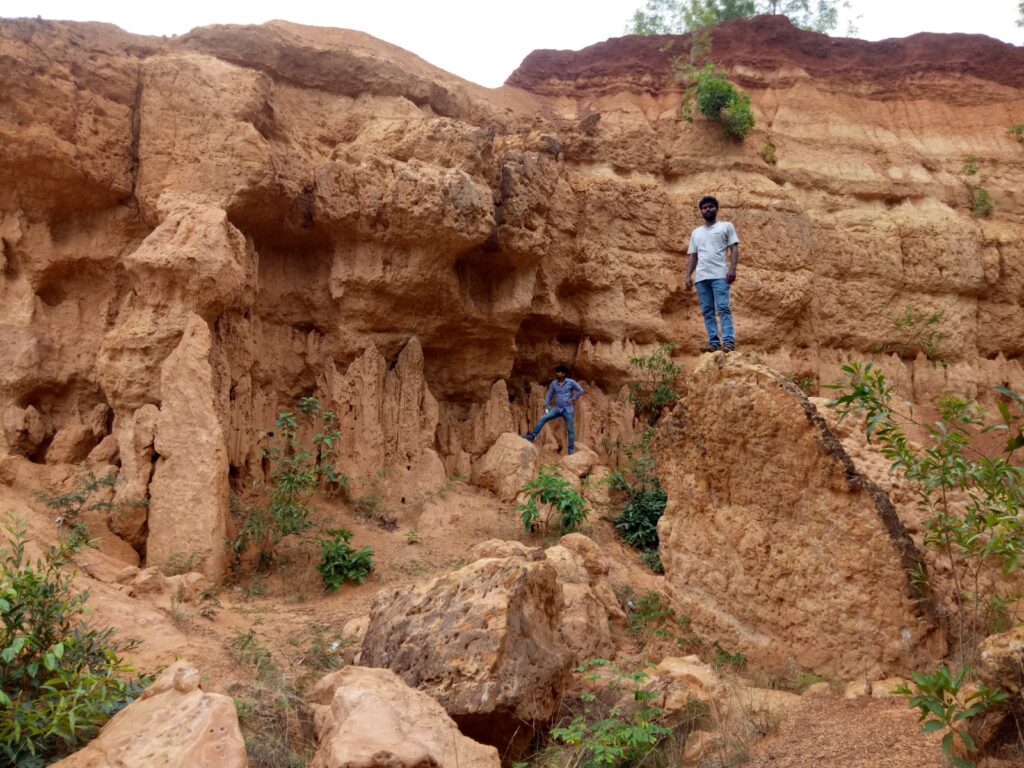
“This is a scientific treasure carved by natural forces over millions of years,” said Shantanu Bhattacharya, Deputy Director General of GSI’s West Bengal Unit. “By declaring Gongoni a Geo-Heritage Site, we aim to raise awareness of its unique landscape and encourage geotourism. This is part of a broader effort to integrate geoscience with public outreach.”
The newly installed board details Gongoni’s geological formation, highlighting the erosional processes that shaped the layered laterite terrain over vast geological timescales. It also places Gongoni alongside two other sites in Bengal—the Sundarbans and Amkhoi fossil park near Bolpur—that have received similar recognition under GSI’s geo-heritage initiative.
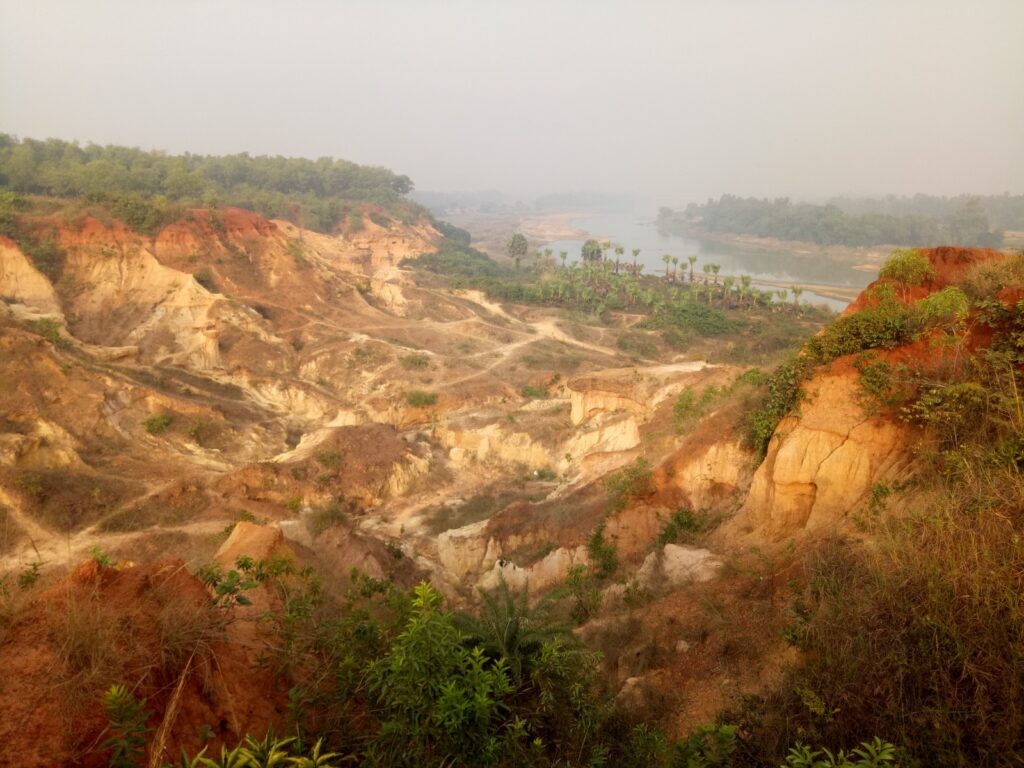
Renowned geographer Dr. Pravat Kumar Shit, who has conducted decade-long research on Gongoni’s gully erosion patterns, welcomed the move as “a new chapter for Earth science in Bengal.” He emphasized the educational value of the site, urging both visitors and researchers to approach it with scientific curiosity and ecological sensitivity. “This designation is not just symbolic—it can spark deeper academic exploration and responsible tourism,” he said.
Local authorities have responded positively to the development. Mridul Shrimani, Deputy Magistrate and tourism in-charge of West Midnapore, termed the recognition “long overdue,” while Garbheta-I BDO Ramjiban Hansda confirmed full cooperation with GSI for installation of the signage.
In addition to the on-ground declaration, GSI has produced a documentary film capturing Gongoni’s geological story, which has been submitted for nationwide broadcast. “It’s a vital tool to educate students, researchers, and tourists,” Bhattacharya noted.
Experts agree that while financial assistance may follow later, the Geo-Heritage tag itself serves as a catalyst—likely to draw academic interest, field studies, and visitors from across the country. With its visually arresting landscape, Gongoni now stands as a living textbook of geomorphology and a potential cornerstone for community-based conservation efforts.
The recognition also underscores the geological diversity of West Bengal—from the fossil-bearing soils of Amkhoi to the deltaic complexity of the Sundarbans, and now the lateritic ravines of Gongoni—marking the state’s emergence as a key contributor to India’s earth science narrative.

